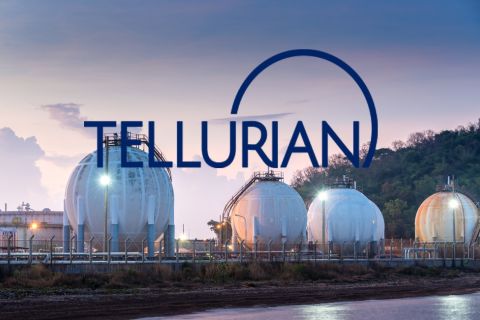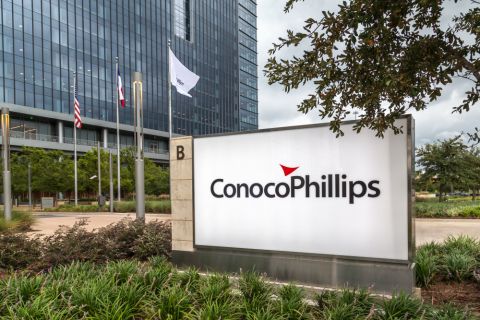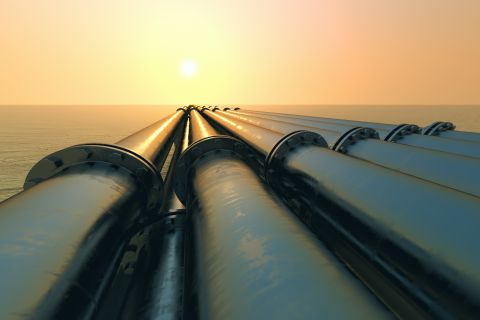In today’s world, the availability of fresh water is a growing public issue. Population growth, industrial demand, and droughts are all factors that affect its availability. Even though the oil industry uses only a small percentage of available fresh water (less than 2% in the US), regulations from federal, state, and even local organizations are having a dramatic effect on availability and cost.
Equally important is the industry’s responsibility to ensure that hydraulic fracturing operations will not disrupt communities. But is there more to managing water than just a social license to operate? Does it make good business sense in a key metric such as well productivity?

FIGURE 1. The true cost of water impacts an operator’s decisions. (Images courtesy of Baker Hughes)
In the oil field water is used in every aspect of drilling, completing (fracturing), and producing. There are significant costs associated with water beyond finding the water (Figure 1). Logistics, storage, pumping, treatment, and reinjection/disposal costs also must be considered. These costs are affected by:
- Regulations that control sourcing and logistics;
- Limited disposal options; and
- New tracking requirements for environmental monitoring and safety.
Challenges an operator faces to find solutions include:
- Sourcing usable water and ensuring uninterrupted availability;
- Reducing nonproductive water during production to preserve well integrity, improve hydrocarbon flow, and lower costs;
- Controlling produced water to minimize scale, corrosion, and bacteria; and
- Reusing water when possible.
Benefits of a holistic approach

FIGURE 2. Reusing produced water offers advantages such as availability, proximity, compatibility, consistency, and simplicity.
Because of organizational structuring, most operators don’t recognize the possible synergies of viewing water management challenges in a holistic way. The drilling department drills, the completion group completes, and production produces. The institutional barriers are formidable when trying to balance cost vs. savings equations between these organizational silos.
In a holistic approach to managing water in the oil field, there has to be a starting point when planning for the water life cycle of the well. The tendency for many, however, is to jump to a solution (reuse) without understanding the full life cycle of water and how reuse, reducing unproductive water, and controlling the effects of water-induced problems are all related.
Reducing unproductive water flow in a production well is indisputably beneficial. But the industry must reevaluate the traditional approach of waiting until the well’s recovery economics are upside-down before taking action. What if, during completions, the well stimulation program included the addition of a product designed to block unwanted water by dynamically sealing off fracture fingers that extend into unproductive water zones? What if adding products during hydraulic fracturing could virtually eliminate scaling or corrosion for years? How can the industry reuse water instead of spending US $40 billion per year on treatment and disposal?
Planning for tomorrow
The aforementioned products are available today, and the technology exists to reuse almost any water. However, without a consistent plan to address infrastructure and coordination of efforts, companies are left to react to individual events (i.e., corrosion, scaling, formation damage, no water, etc.) as these occur, which can waste time and money and can even lower reservoir performance.
With the exception of liquids-rich or dry gas wells, virtually all wells produce water. How much water? In 2010 the worldwide estimate was more than 290 Bbbl. Even more concerning is the estimated rate of growth in water production, which is anticipated to be 24% within five years vs. an increase of only 18% in hydrocarbons. Water quality varies dramatically from basin to basin. What will work are the key elements of a consistent integrated plan addressing the fundamental points of reducing, controlling, and reusing water.
Reduce and control
The problems associated with excess produced water are understood, but how many companies have a strategy for dealing with this water before it becomes an economic issue? Instead of a traditional surface-treatment approach, proper placement of products like relative permeability modifiers during hydraulic fracturing can reduce the ratio of water production without damaging the formation and yield better hydrocarbon production. Additionally, once water comes into the production stream, there are technologies to help reduce water influx. Accomplishing this, however, requires a coordinated strategic plan that is followed by the operator’s completion and production groups. Once the plan is established, selecting well-specific solutions is critical to a successful application (Figure 2).
Water will be produced, but much of this beneficial water actually helps move the oil into the wellbore. Problems associated with this water (corrosion, bacteria, scaling, etc.) are usually treated from the surface. However, in new completion technologies, especially horizontal wells, liquid treatments from the surface do not penetrate deep into the formation and are limited to the near wellbore. To the extent that the liquids make contact with the downhole formation and components, this treatment works.
The better option, however, proactively uses slow-releasing and long-lasting chemicals applied to a solid substrate and pumped deep into the formation during hydraulic fracturing. The chemical treatment begins before the produced fluids reach the sensitive areas where temperature or pressure changes commonly cause flow-assurance and corrosion problems. The chemicals may vary by area, but the strategy of proactive treatment remains.
Reuse
Produced and flowback waters can be reused safely and effectively. The oil industry sends about half of the water produced into deep injection disposal wells. Pressure management and IOR use the rest. Trucks and pipelines are the customary methods for moving water to the disposal site, but this can add from $2/bbl to $10/bbl in logistics, storage, and disposal costs. When a well has a 90% or higher water cut, it doesn’t take much for these costs to approach the value of the produced hydrocarbons.
Reusing produced water instead of fresh water offers many advantages, the first of which is availability. With few exceptions, most fields produce more water than needed. With availability comes proximity since the water is already close to where it’s needed (i.e., lower logistics costs). Compatibility is advantageous because produced water does not need to be altered to ensure consistency with the formations being completed since it is derived from the same formations, making it readily usable. The last advantage is simplicity because fewer chemicals are required. Products that inhibit clay swelling are no longer needed.
By knowing the exact makeup of the water ahead of time, potential scaling or corrosion issues can be identified early and a proactive program designed to address these to make a better wellbore with improved production. As Baker Hughes’ solution for reuse, the H2prO water management service offers an effective water management strategy to meet production objectives and lower operating expenses associated with water sourcing and disposal.
Proactive planning for reducing, controlling, and reusing produced water in field development should be undertaken as a complete program that includes all departments. Completion design and product selection for reservoir flow assurance and integrity should be based on the health of the well for its entire life cycle.
Recommended Reading
Sempra Targets Summer 2025 for Commercial Start of ECA LNG Phase 1
2024-03-06 - Sempra is targeting the summer of 2025 as the commercial operations date for its 3.25 mtpa (0.43 Bcf/d) nameplate capacity Energía Costa Azul LNG Phase 1 project, located in Ensenada in Baja California, Mexico.
Heard from the Field: US Needs More Gas Storage
2024-03-21 - The current gas working capacity fits a 60 Bcf/d market — but today, the market exceeds 100 Bcf/d, gas executives said at CERAWeek by S&P Global.
FERC Approves Extension of Tellurian LNG Project
2024-02-19 - Completion deadline of Tellurian’s Driftwood project was moved to 2029 and phase 1 could come online in 2027.
ConocoPhillips CEO Ryan Lance Calls LNG Pause ‘Shortsighted’
2024-02-14 - ConocoPhillips chairman and CEO Ryan Lance called U.S. President Joe Biden’s recent decision to pause new applications for the export of American LNG “shortsighted in the short-term.”
Midstream Builds in a Bearish Market
2024-03-11 - Midstream companies are sticking to long term plans for an expanded customer base, despite low gas prices, high storage levels and an uncertain political LNG future.





